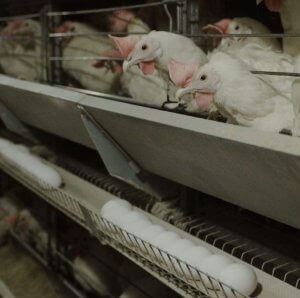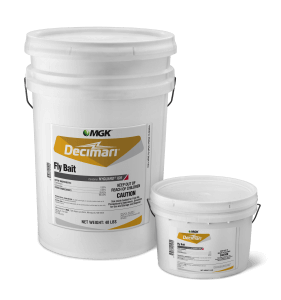Warming weather brings migrating birds and the potential spread of avian influenza. Spring is the perfect time to ramp up biosecurity and think about prevention of diseases like avian influenza. There are multiple pathways that avian influenza can spread, such as from humans or birds touching contaminated surfaces and in air droplets or dust particles in the air.
Avian Influenza can Spread to Poultry Through Insect Vectors
Another route of virus spread is through insect vectors. It is not the main pathway of spread, but a reduction in all pathways can lead to improved outcomes and reduced viral transmission potential to poultry and people. Poultry producers need to be diligent with biosecurity in a variety of ways including the management of insect vectors.
Insect vectors can encounter external sources of avian influenza by landing on infected wild bird feces and then transmitting the virus to a commercial flock. Insect vectors can also transmit virus particles between commercial facilities.
Flies and Beetles are Common Insect Vectors for Poultry
In addition to avian influenza, insects can also vector other disease-causing pathogens such as bacteria like E. coli, and salmonella, other viruses like Marek’s disease virus, infectious bursal disease virus, and even fungal pathogens like Aspergillis spp. The most cited insect vectors are filth flies and darkling beetles.
There is one research article stating that mosquitoes in Thailand captured in an infected poultry facility were infected with and had the avian influenza virus replicating inside their bodies. Transmission studies were not performed so we don’t know if mosquitoes can transfer the virus to poultry, but it is a possibility1.
With the potential impacts of vector insects like darkling beetles and flies in poultry facilities we can see why it is economically important to control them.
Combat Avian Influenza in your Poultry Facility with IPM
Improving biosecurity relating to insect vectors starts with integrated pest management (IPM) including cultural, physical, biological, and chemical options.
 Cultural control and sanitation should be at the top of the list. This means reducing the conducive conditions such as the insect’s food, water, and harboring or resting areas. Next should be physical control such as exclusion. Seal all possible entry points for these pests so they can’t get into the facility to begin with.
Cultural control and sanitation should be at the top of the list. This means reducing the conducive conditions such as the insect’s food, water, and harboring or resting areas. Next should be physical control such as exclusion. Seal all possible entry points for these pests so they can’t get into the facility to begin with.
Biological controls can be implemented such as adding parasitoid wasps, but if pesticides are also used as a control strategy this needs to be thoughtfully done to reduce harm to the parasitoids aiding in management of the pests.
Pesticides are an effective tool, but the last one employed in an IPM program. Once all cultural, biological, and physical pest management strategies have been implemented it is time to determine if insecticides are still needed.
MGK Insecticides Control Insect Vectors Dangerous to Poultry
Along with other IPM components, insecticides are a valuable tool for increasing biosecurity and reducing insect vector populations.
 MGK has several products that can be used in empty barns, around the exterior of barns, over poultry, and in the areas surrounding the barns. Empty barn and perimeter applications can be done with Tobex® Multi MoA Concentrate or Onslaught® FastCap to decrease the overall numbers of potential insect vectors that are harboring in and around the facility.
MGK has several products that can be used in empty barns, around the exterior of barns, over poultry, and in the areas surrounding the barns. Empty barn and perimeter applications can be done with Tobex® Multi MoA Concentrate or Onslaught® FastCap to decrease the overall numbers of potential insect vectors that are harboring in and around the facility.
Applications should be done in any area where insects rest and breed. Pay special attention around windows, doors, and structural base of the poultry houses and barns, or anywhere insects may enter the facility.
There are many situations where insecticide applications must take place while animals are present. Applications over animals can be done with Evergreen® Pro 60-6, Riptide®, ULD® BP-100, or ULD® BP-300.
 A scatter application outside of poultry houses or bait station applications inside poultry houses can be done with Decimari® Fly Bait in areas that are not accessible to animals. When birds are not present an indoor application of Darlex® or Tobex® can be done as a banded or whole house application. These types of applications are usually done in broiler facilities in between flocks.
A scatter application outside of poultry houses or bait station applications inside poultry houses can be done with Decimari® Fly Bait in areas that are not accessible to animals. When birds are not present an indoor application of Darlex® or Tobex® can be done as a banded or whole house application. These types of applications are usually done in broiler facilities in between flocks.
Complete control of darkling beetles, flies, and other potential vectors in or near animal production facilities is not realistic. However, reducing the numbers of vectors inside and outside a facility reduces the probability of an infection being transported to the animals.
Sources:
